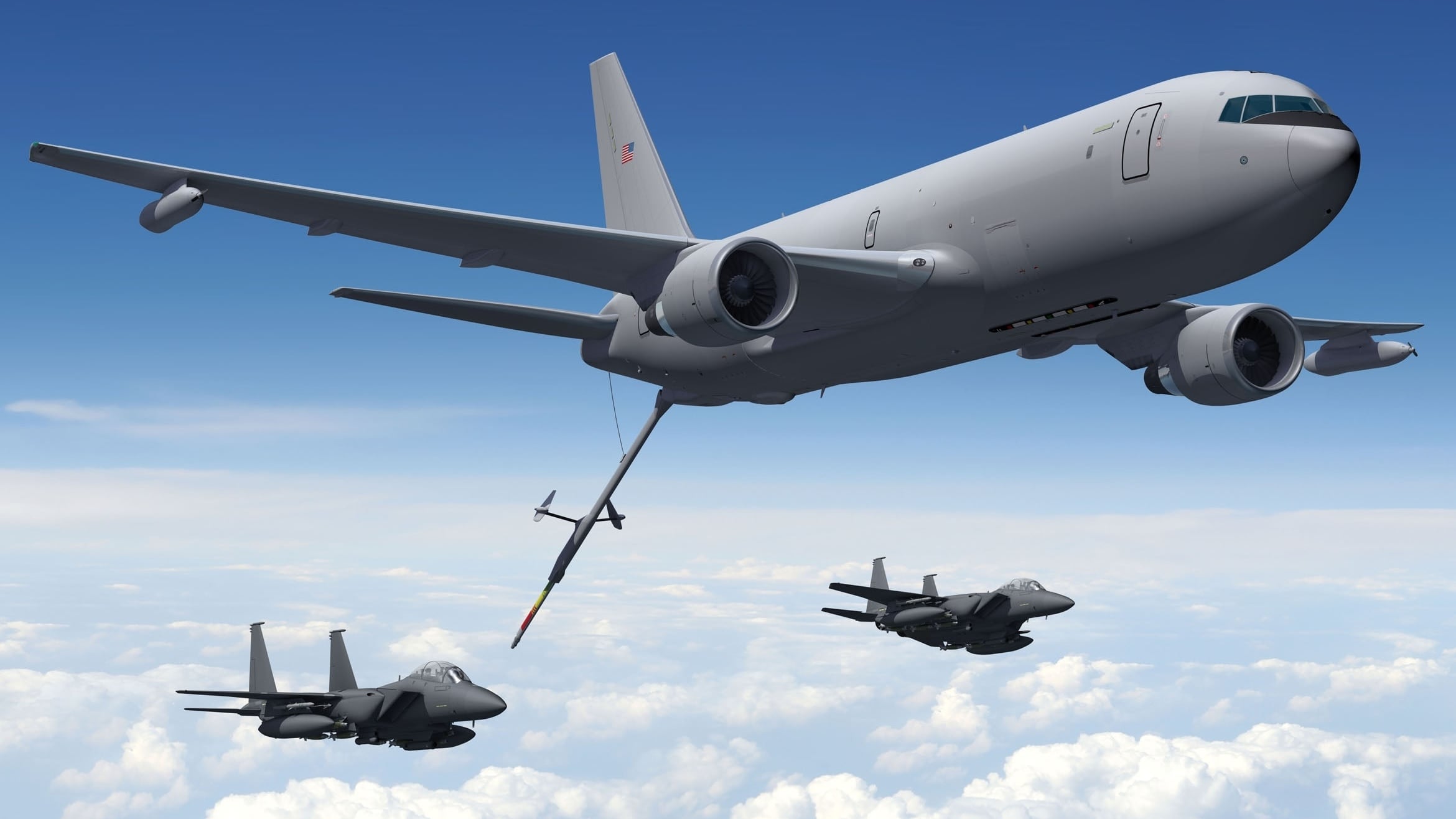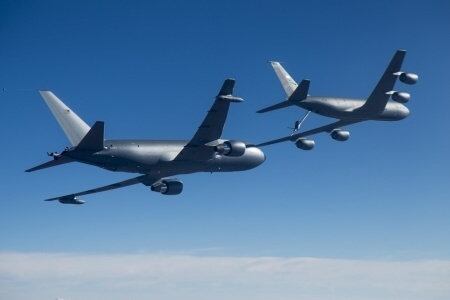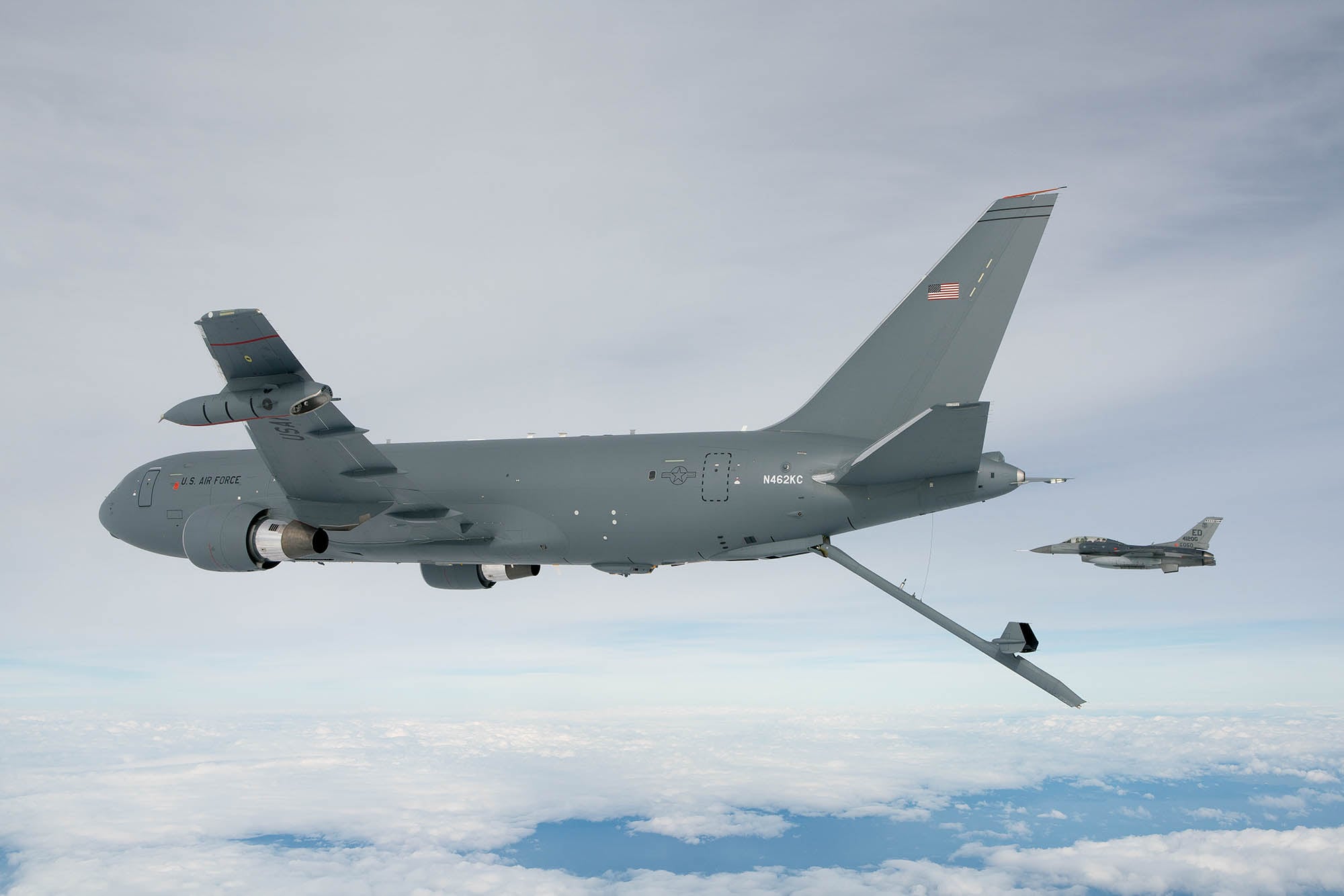WASHINGTON — Boeing on Wednesday disclosed more bad news on the KC-46 program: The company will have to eat another $329 million as a result of cost overruns.
Under the terms of its fixed-price deal with the U.S. Air Force, Boeing must pay out of pocket for any expenses over the $4.9 billion contract value. That agreement has been a tough pill for Boeing to swallow, as the company has now had to cough up about $2.9 billion in pretax fees — or about $1.9 billion after tax — as delays and cost overruns mount.
There are signs another missed milestone may be on the way.
Over the past year, Boeing has remained adamant that it can deliver the first KC-46 aircraft by the end of 2017 — although the Air Force believes it will be later, likely next spring.
Asked by Defense News whether the company still believes it can hit that deadline, Boeing spokesman Chick Ramey demurred.
“We’re working with the Air Force on the schedule and expect to deliver the first 18 tankers in 2018,” he said. Regarding a contractual obligation to deliver 18 certified KC-46s and nine refueling pods, “we remain on track for late next year.”
RELATED

According to the company, Wednesday’s cost overrun was driven by “incorporating changes into initial production aircraft as we progress through late-stage testing and the certification process.”
Speaking to reporters on Wednesday, Boeing CEO Dennis Muilenburg provided few details about the underlying cause of the cost overrun and instead downplayed the impact of the repeated penalties on the long-term health of the program.
“We remain very confident,” he said. “The opportunity is measured in hundreds of aircraft. We expect this to be a long-term production and support franchise, one that will add tremendous value for our customers, and the need for the new tankers is very clear. So the fundamentals for the program are strong, the long-term value proposition is very strong.”
The $329 million charge is split between Boeing’s defense business unit, which took on $73 million of the overrun, and its commercial segment, which took on the remainder.
In January, when the company announced a $201 million charge on the tanker, Muilenburg gave a similar reason for the charges. In 2014, the U.S. Federal Aviation Administration discovered that certain wiring bundles in early production aircraft did not meet military requirements, so Boeing had to rework aircraft so redundant groups of wiring were not bundled together.
RELATED

Although Boeing cited the modifications to initial production as the cause of cost growth, the company has had numerous technical problems sprout up over the past several months. Most critically, the Air Force has noted numerous events where the KC-46 boom scraped the surface of aircraft — a deficiency that could possibly cause the tankers to peel away the low-observable coatings of stealth aircraft like the B-2, F-22 and F-35.
Brig. Gen. Donna Shipton, the Air Force’s program executive officer for tankers, told reporters in September that the service will do testing and analysis to better understand the root cause and prove out its hypothesis that “undetected contact” is happening at a higher rate than in the legacy fleet.
RELATED

However, the timeline for resolving the problem is still up in the air, as is whether the Air Force will accept KC-46 aircraft if the issue has not been solved.
Muilenburg said that despite the challenging development program, Boeing is closing in on the finish line. The company has completed more than 2,000 hours of flight testing with six tankers, and about 80 percent of flight test requirements have been completed.
“While we’ve had some issues that have occurred during flight tests that are normal to tanker testing, like the boom scraping issue … these are not unusual items, and I can tell you the feedback we’ve heard from the customers flying the airplanes is that the airplanes are flying well and the controllability of the boom is excellent,” he said.
“The challenges we’re having right now are related to just implementing just final detailed changes on the aircraft to get them to a final certification standard,” he said. “These are not unusual, but we do have a lot of airplanes flowing concurrently through the production system.”
Valerie Insinna is Defense News' air warfare reporter. She previously worked the Navy/congressional beats for Defense Daily, which followed almost three years as a staff writer for National Defense Magazine. Prior to that, she worked as an editorial assistant for the Tokyo Shimbun’s Washington bureau.







